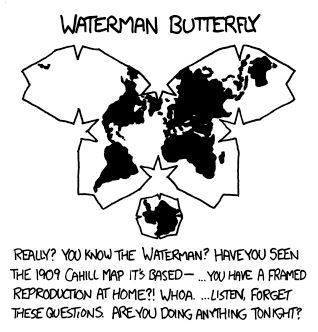

Thanks for the tips. Indeed i noticed they become gradually more digestible (inulin->frutcose) as spring approaches, but then you can’t store them - they grow…


Thanks for the tips. Indeed i noticed they become gradually more digestible (inulin->frutcose) as spring approaches, but then you can’t store them - they grow…


Does anybody know how to make a brew from topinambours aka sunchokes aka ‘jerusalem artichokes’ (silly name) - that’s all i’ve got too many of at this time of year ?


Good article, it makes sense to plan heat-pumps on a larger scale, hope support for such initiatives survives russian disinfo.
Couldn’t they pump some heat directly from the Danube, or would that be too problematic for ecology and countries downstream ?


Which U.S. is trying? At least with a legal process in London, there is some hope it continues.


I’d guess the chinese dam is rather an excuse, and the real motivation is electricity - potentially a lot from that river, although that end of Assam doesn’t yet have a huge population to use it. Also, the Brahmaputra riverbed is wide but variable, so maybe they hope by taming it they can grow crops there. But there must be a huge amount of sediment, what’s going to happen to that?


Strange that Genoa controlled off bits of coast (yellow) all the way to Crimea, Azov sea (is Tana now Azov?) , and Circassia, how did they manage all that? And who’s in that purple-coloured “Theodoro”?


Sure it will, there’s a lot of inertia and feedbacks in the system, some kicking in recently although there’s nothing physically special about 1.5oC. Also, as well as CO2, emissions of CH4 rise fast, while those of SOx fall. My point is rather that people (especially anglophones) tend to over-estimate the importance of USA in world affairs. What matters is that the rest of the world gets on with transitions.


Is it? Bush withdraw from Kyoto protocol, Trump already withdrew from PA. This game just became a predictable cycle, a bit like El Niño, the rest of the world got used to the unreliability of bipolar USA, which reduces their negotiating strength. Meanwhile regarding ambition for future emissions, what matters most for the next set of targets at COP30 is China and India (the former at peak due over-construction, and higher per-capita than Europe, the latter relatively low, but set to rise fast if there is no change of direction). We can wait out USA (but please sort out your bipolar system) - 4 years is not long in climate.


Also remember Bush did the same for Kyoto protocol. Loop repeats again.


Split it? I hear that the Kazakh side of the sea grows again, even though the Uzbek side turned to cotton.


Methane is a big problem, tackling CH4 may be the only fast enough way to reduce peak warming. Also, by using up atmospheric oxisidising capacity, CH4 increases it’s own lifetime (i.e. the more we put in the air, the longer it hangs around) - a problematic positive feedback. First priority of course is to tackle the obvious emissions (especially from fossil installations - many in russia as well as usa) but it’s still worth studying what might be done to reduce atmospheric CH4. Seems this proposal is not an effective solution, but partly a question of time and place .


Where are these mammoths meant to roam ? And does anybody get why they think trampling grass and snow is going to protect permafrost ?


This is hardly surprise news, it’s just what the demographics projected. And if trends continue, China’s population will halve by 2100.
The big one to watch now is India, and then central Africa, those are harder to project.
You can experiment with my model - click the ‘model pop’ plot on the left side.


It’s interesting that the rise at Mauna Loa is a bit higher than the global average. From such differences one gets a clue about the origins (useful as regional biospheric and oceanic sources and sinks are still hard to quantify precisely). I note also that they are predicting a lower rise in 2025. So, if I read it correctly, there’s a small sign of hope that the trend may get better, as the factors which contributed to this anomalous rise were more in the early part of 2024, related to the earlier El Niño. Unless the latter returns again soon - keep an eye on the pacific heat.


It’s now decades too late to choose between climate mitigation and adaptation, we have to do both. This includes that more people will inevitably migrate to more ‘climate-safe’ regions. The challenge is to help that process be more gradual and equitable, which includes some issues you raise. For example development of new homes creates opportunities, including jobs, but older landowners may benefit disproportionally.
This is a global issue, not specific to USA, but given that context, while I also have little sympathy for billionaires with seaside palaces in Florida, such people are few, and it’s also hard to feel sympathy for populations in the midwest who collectively voted for decades for climate-denying politicians who blocked effective policies, even influentially on a global scale.


This is difficult. Yes we should discourage further mis-investment in unsustainable locations. Including whole cities, which may still be liveable for a few more decades, but not centuries. On the other hand, by pushing down market sale prices, this penalises people whose ancestors moved there, long before we knew much about climate change. So maybe they should get some compensation or help to move, although on such timescales there are plenty of other ‘bad-luck’ factors that society doesn’t compensate.
Maybe add some major tributaries - eg the Inn, Sava, Tisza … ? Sometimes, depending rain on the mountains, these have greater water flow.


Agree with key messages, like the novel rate-per-decade plot. Most people seem unaware of the huge influence of declining sulphate emissions - good news is that’s short-term-ish. We could also make a quick difference by reducing methane, even quicker aviation cirrus.
You can explore similar plots with contributions to radiative forcing in my SWIM model (note - gases /forcings not so up to date as above, but wider range of topics).


Clearly there’s a big gap between greenwash rhetoric and practical reality, but that’s not unusual all over the world.
The big question here is not the design of the central buildings, but whether it makes sense, as long-term sustainable development, to relocate the capital, and it seems to me there are arguments both ways. Jakarta is low-lying, literally sinking into the rising sea, and the island of Java is overcrowded - so something had to change. The new capital will lead to some deforestation on Borneo, on the other hand by bringing elites nearby they may re-evaluate the value of the jungle, it could be harder to hide destruction. The new location has potential for sea transport, but may lead to an over-dependence on air-transport.
Maybe useful to compare with other countries that moved their capital for geographical balance, and to avoid rising sea-level and overcrowding, for example Lagos to Abuja, or the new egyptian constructions SE of Cairo.
My dog certainly has a theory of my mind, she’s always out in front guessing where I’ll go and happiest when she gets it right, or suggesting ideas when it seems I lack one.